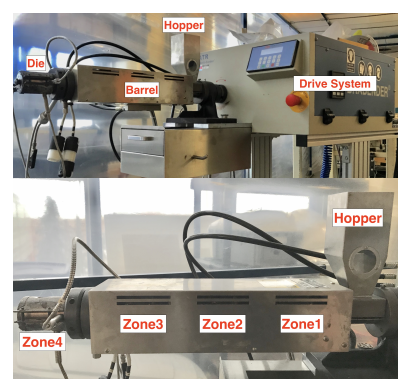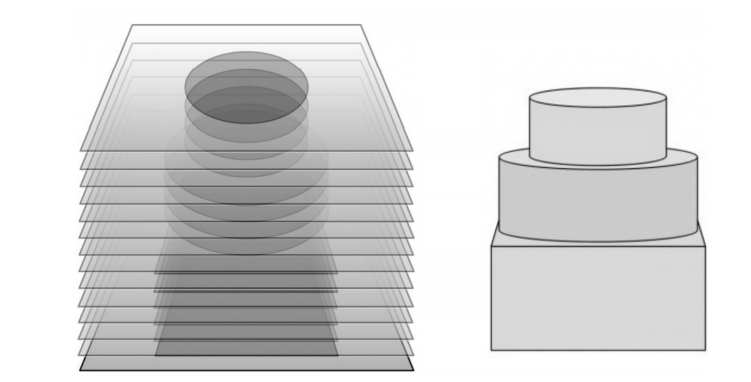University of Alberta thesis student Danesh Zonoobi takes fabrication potential to the next level, exploring the world of 4D in ‘Mechanical Properties of Extrusion-Based Additive Manufacturing of Shape Memory Polymers.’ The author studies the effects of extrusion-based additive manufacturing (EBAM) or FDM 3D printing on shape memory polymers (SMPs), mainly in relation to their mechanical properties—a main concern in progressive fabrication techniques today.
 SMPs have been gaining recognition over the past few years due to their almost magical qualities in being able to morph as a reaction to the environment, often meaning temperature or moisture. Thermo-responsive SMPs, reacting to heat, are becoming the most well-known and offer many different benefits due to affordability in manufacturing, lightweight properties, and deformation characteristics conducive to experimentation by scientists—especially due to the ease in programming such forms.
SMPs have been gaining recognition over the past few years due to their almost magical qualities in being able to morph as a reaction to the environment, often meaning temperature or moisture. Thermo-responsive SMPs, reacting to heat, are becoming the most well-known and offer many different benefits due to affordability in manufacturing, lightweight properties, and deformation characteristics conducive to experimentation by scientists—especially due to the ease in programming such forms.
Before scientists can work with SMPs in-depth, however, they must understand the mechanical properties and behaviors of the SMPs and learn more about their ability to memorize shape. Many new materials have been created specifically for SMPs in a range of applications—from aerospace to medicine. For this study, the researchers used a semi-crystalline thermoplastic polyurethane shape memory polymer (MM4520). To avoid bubbling during 3D printing, the researchers dried the polyurethane pellets in a vacuum oven, and then began the extrusion process:
- Feeding
- Melting
- Shaping
- Cooling
- Winding
An Ultimaker 3 was used for sample production, and then the rectangular pieces were made into dogbone samples via CNC machining:
“The main advantage of using machining instead of directly printing dogbones is that it removes the shell layer from the sample edges, leaving the oriented fabricated lines behind,” explained Zonoobi.

Illustration of Brabender Inc. drive system attached to the extruder (top), side view of extruder melting barrel with four heating zones (bottom)
Overall, the research team created 120 samples with four different raster angles (0°, 30°, 60° and 90°) and three different infill percentage levels (85%, 100% and 115%). Tensile tests evaluated the following:
- Measurements
- Elastic modulus
- Yield strength
- Maximum elongation percentage
- Modulus of resilience
- Tensile toughness
“According to the tensile test results, no significant variation in elastic modulus (E) of different raster angles is observed except for 85% infill samples with 90° raster angle which show about 35% decrease in elastic modulus compared to other raster angles of the same infill,” states the author. “Moreover, increasing infill percentage from 85% to 100% causes a significant increase in elastic modulus.
“Unlike elastic modulus, yield strength and resilience (E, σy,Ur), raster angle causes dramatic variation in maximum elongation (EL%) and tensile toughness (UT ) at any infill percentage level. However, the impact of raster angle magnifies with the reduction of infill percentage. Also 100% infill samples are superior compared to 85% and 115% infill samples, in terms of deformability and tensile toughness except at 90° raster angle.”
Along with the findings of the experiment, a generic algorithm was created regarding the elastic modulus for the EBAM samples, requiring samples with 0° and 90° raster angle as the input. And although there were only small differences for 100 percent of infill samples, Zonoobi points out that the values were not in suitable agreement with the experimental results.
“Hence, two different compensation terms are introduced to modify the CLPT model according to the EBAM process principals,” concluded Zonoobi. “With these modifications, the difference between experimental and predicted values decreased significantly to a minimal range of 0.25% to 4.47%. Additional studies need to be done in order to validate the model and the modifications used in this thesis to validate the usability of the model under different conditions.”
SMPs are a source of fascination for many users today, 4D printing them in silicone, using magnetic ink, and using them for improved properties in soft actuators. What do you think of this news? Let us know your thoughts! Join the discussion of this and other 3D printing topics at 3DPrintBoard.com.
[Source / Images: ‘Mechanical Properties of Extrusion-Based Additive Manufacturing of Shape Memory Polymers’]Subscribe to Our Email Newsletter
Stay up-to-date on all the latest news from the 3D printing industry and receive information and offers from third party vendors.
You May Also Like
Precision at the Microscale: UK Researchers Advance Medical Devices with BMF’s 3D Printing Tech
University of Nottingham researchers are using Boston Micro Fabrication‘s (BMF) 3D printing technology to develop medical devices that improve compatibility with human tissue. Funded by a UK grant, this project...
3D Printing Webinar and Event Roundup: April 21, 2024
It’s another busy week of webinars and events, starting with Hannover Messe in Germany and continuing with Metalcasting Congress, Chinaplas, TechBlick’s Innovation Festival, and more. Stratasys continues its advanced training...
3D Printing Webinar and Event Roundup: March 17, 2024
It’s another busy week of webinars and events, including SALMED 2024 and AM Forum in Berlin. Stratasys continues its in-person training and is offering two webinars, ASTM is holding a...
3D Printed Micro Antenna is 15% Smaller and 6X Lighter
Horizon Microtechnologies has achieved success in creating a high-frequency D-Band horn antenna through micro 3D printing. However, this achievement did not rely solely on 3D printing; it involved a combination...
































